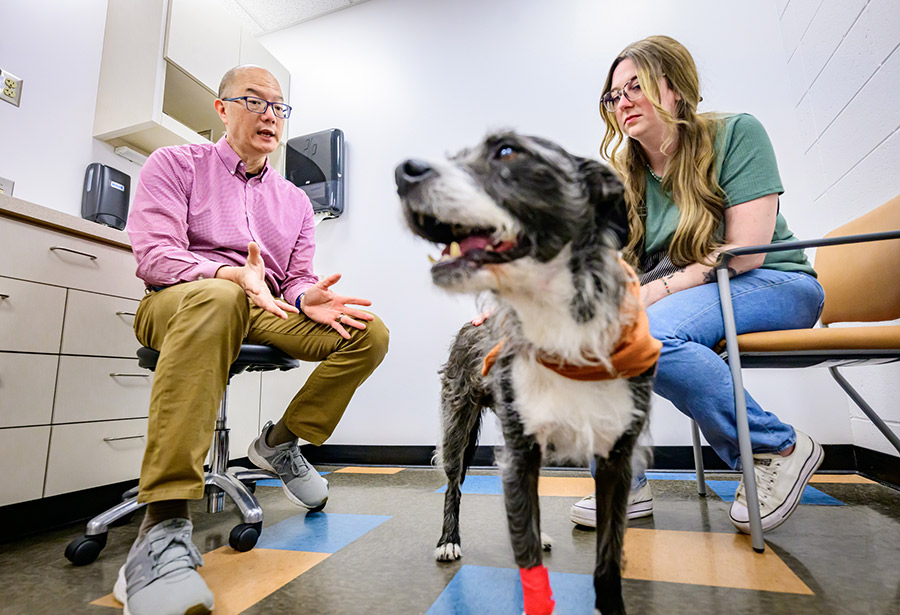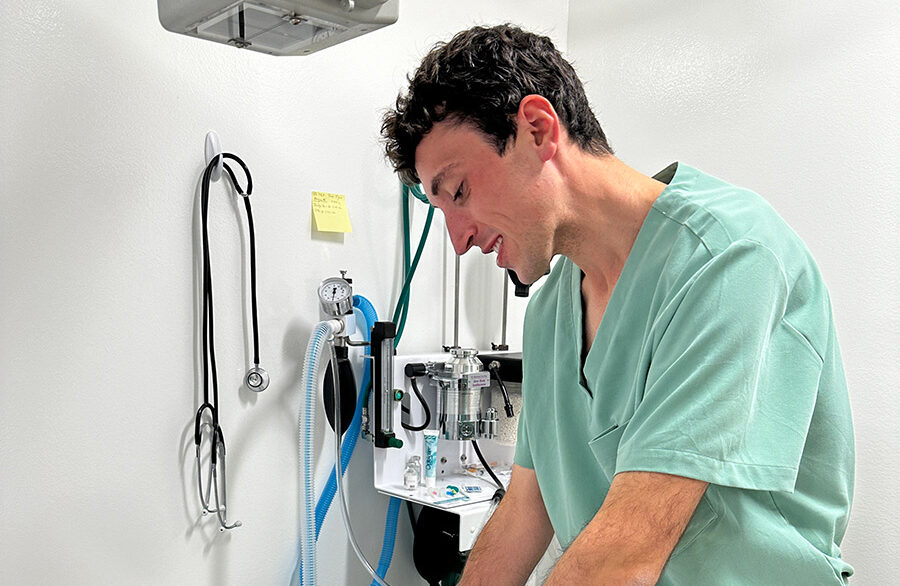EVP International Welcomes 38 Alumni in Japan
Responding to the growing demand for pork in Japan, top swine veterinarians in that country recently became the newest alumni of the University of Illinois Executive Veterinary Program (EVP™).
In June, 38 veterinarians, representing every major swine practice and pork production company in Japan, spent three days learning core disease management skills.
“Japanese culture prizes quality pork as part of the diet,” said Dr. Jim Lowe, an associate professor at the Illinois College of Veterinary Medicine and director of the college’s i-Learning Center, which is focused on online and global veterinary education.
Pork Production in Japan
According to the USDA, growing consumer preference for pork over fish has led to increased demand for pork in Japan. Last year marked the first time Japan produced less than half of the pork it consumed.
![[EVP International participants in Japan]](https://vetmed.illinois.edu/wp-content/uploads/2021/04/news-evp-japan-working.jpg)
“The Japanese swine industry suffers from many of the same disease issues as the U.S. industry, including Porcine Reproductive and Respiratory Syndrome (PRRS),” noted Dr. Lowe. “Japanese veterinarians have, for several decades, engaged with U.S. veterinarians to share information and learn best-practices for disease management.”
The three-day course, led by Dr. Lowe, focused on PRRS management practices and covered immunity and homeostasis, systematic approaches to problem solving, pathogen-host interactions, transmission of the PRRS virus within and between herds, and control and management of disease. Course delivery incorporated interactive, problem-solving exercises, as it does in the 18-month version of EVPTM delivered on site at the University of Illinois.
The EVP Impact Factor
After 25 years as the premier program offering intensive postgraduate education for food supply veterinarians in North America, EVPTM is extending its influence worldwide. The June course marked the first instance of EVP International, a new global emphasis for the program that has previously provided advanced training to veterinarians in small animal health and ultrasound as well as swine health management. In addition, EVP Beef, initiated in part by Dr. Lowe, launched in 2017 and will graduate its first class in October.
![[EVP International inaugural class]](https://vetmed.illinois.edu/wp-content/uploads/2021/04/news-evp-japan-gradgroup.jpg)
As for the first cohort in EVP International, Dr. Lowe said: “The University of Illinois is proud to welcome our newest EVP alumni to the family of swine professionals working to meet the food-supply demands of the globe!”
He said plans are in the works for a second module of EVP International in 2019 to further address disease management topics.

![[Dr. Jim Lowe poses with a Japanese veterinarian]](https://vetmed.illinois.edu/wp-content/uploads/2021/04/news-evp-japan-2018.jpg)


